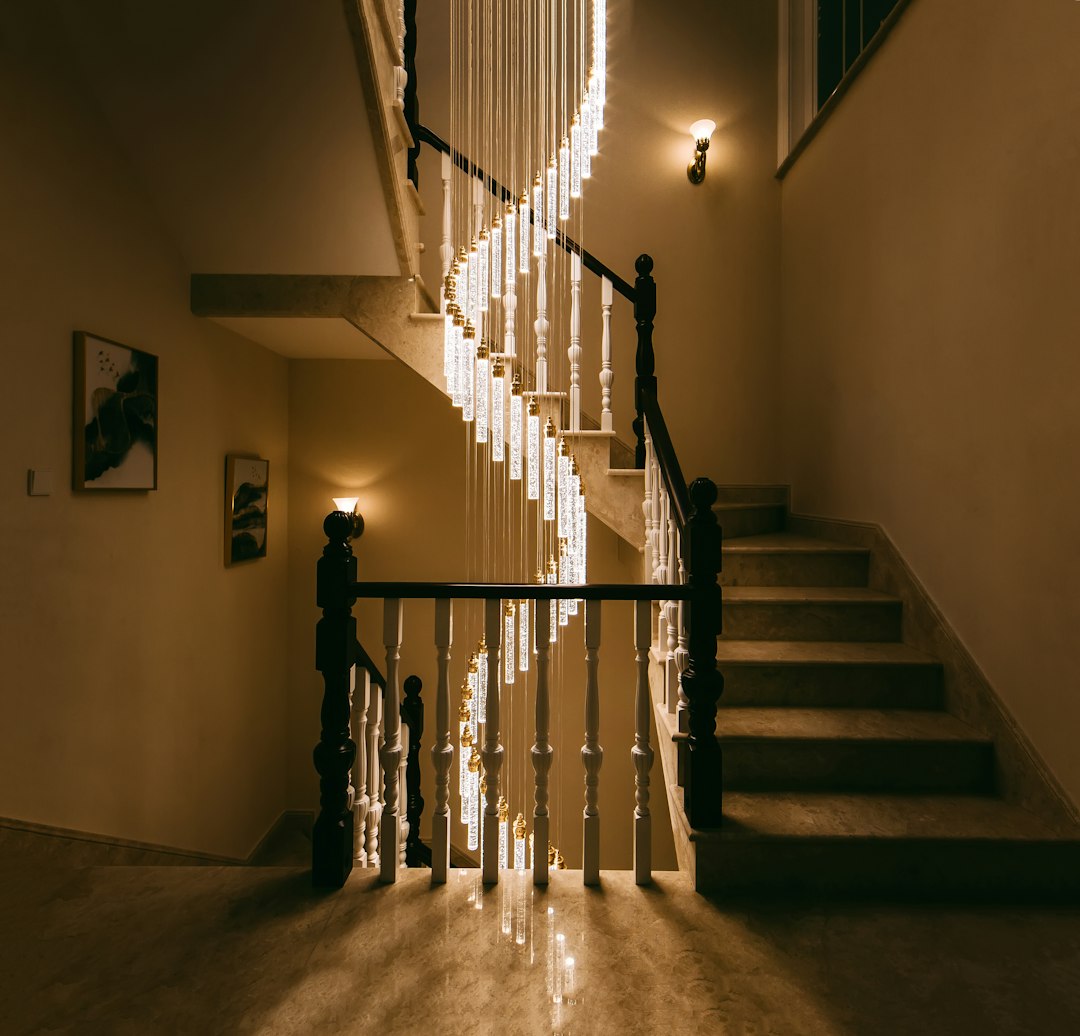Lighting Design: How Layered Home Lighting Boosts Mood, Wellness, and Everyday Joy
If you’ve ever stepped into a beautifully lit room and felt your shoulders drop, your breath slow, and your mood lift—congratulations, you’ve experienced the power of residential lighting design. Thoughtful lighting isn’t just a finishing touch; it’s a foundation of a healthy, happy home. From circadian-friendly bulbs and high-CRI LEDs to layered ambient, task, and accent lighting, the right plan can transform how you sleep, focus, socialize, and restore.
As a residential interior designer in the San Francisco Bay Area, I see lighting function like good architecture: it guides the eye, calibrates energy, and sets emotional tone. Below, you’ll learn the essentials of layered lighting, how color temperature affects your circadian rhythm, and practical, room-by-room ideas to elevate well-being—without overwhelm.
Why Lighting Matters for Mood and Well-Being
Light is a biological signal. It cues your body’s clock for sleep and alertness, impacts serotonin and melatonin production, and shapes how your brain reads color and texture. In neuroaesthetics, we talk about sensory comfort—the way light reduces stress by clarifying contrast, softening glare, and revealing natural hues that feel “true.” When your lighting is balanced, spaces feel calmer and more coherent; when it’s harsh or insufficient, you may experience eye strain, agitation, or fatigue.
Wellness benefits of good lighting design:
- Better sleep quality: Bright, cooler light earlier in the day; warmer, dimmer light in the evening supports your natural sleep cycle.
- Improved focus and productivity: Adequate task lighting reduces squinting and boosts concentration for reading, cooking, or working.
- Elevated mood: Soft ambient lighting and strategic accent lighting create a sense of sanctuary, intimacy, and visual interest.
- Safety & confidence: Proper illumination on stairs, hallways, and exteriors increases comfort and reduces risk.
The Three Layers of Residential Lighting Design (and Why You Need All Three)
Great homes use layered lighting—a blend of ambient, task, and accent sources—to deliver flexibility from morning to night.
1) Ambient Lighting (General Illumination)
Think of ambient lighting as your baseline. It provides overall coverage so rooms feel open and navigable.
- Best sources: Ceiling fixtures, chandeliers, semi-flush mounts, recessed cans with diffusers, track lighting, and large-scale floor lamps with up-light.
- Mood effects: Even, glare-free ambient illumination reduces visual stress and supports calm social connection.
- Wellness tip: Use dimmers to drop the intensity after sunset, signaling your body toward rest.
2) Task Lighting (Focused Performance)
Task lighting drops brightness exactly where you need it—without blasting the whole room.
- Best sources: Under-cabinet LEDs for counters, reading lamps with adjustable arms, vanity sconces at eye level, desk lamps, and focused pendants over kitchen islands.
- Mood effects: The right brightness and beam angle prevent eye strain, reduce headaches, and promote a smooth, confident workflow.
- Wellness tip: For reading and craft zones, look for high-CRI LED bulbs (90+ CRI) to render text and colors accurately.
3) Accent Lighting (Drama, Depth, and Delight)
Accent lighting is your sparkle factor. It draws attention to art, architecture, bookshelves, and plants—creating visual rhythm and emotional warmth.
- Best sources: Picture lights, wall washers, directional spots, toe-kick LED strips, cove lighting, and interior cabinet lights.
- Mood effects: Contrast and highlights make rooms feel curated, cozy, and alive.
- Wellness tip: Use accent lights in the evening instead of blasting overheads—instant serenity.
Color Temperature, CRI, and Your Circadian Rhythm
To get the wellness piece right, you need two key concepts: Kelvin (K) color temperature and CRI (Color Rendering Index).
Color Temperature (Kelvin)
- 2700–3000K (Warm White): Golden, candle-adjacent light that relaxes the nervous system; ideal for bedrooms, living rooms, and evening use.
- 3000–3500K (Soft Neutral): Balanced and versatile; great for kitchens and mixed-use spaces.
- 3500–4000K (Neutral to Cool): Crisp and energizing; smart for daytime task zones, laundry rooms, or home offices.
- >4000K (Cool/Daylight): Very bright and stimulating; typically reserved for garages or specialized tasks.
Circadian lighting strategy: Brighter, cooler light in the morning/afternoon to enhance alertness; warmer, dimmer light in the evening to wind down. Smart bulbs and tunable LEDs can automate this shift.
Lighting Design Focus: CRI (Color Rendering Index)
CRI measures how accurately a light source reveals color (0–100). For residential interiors—especially with art, textiles, and finishes—select CRI 90+. This helps skin tones, fabrics, and wood hues read beautifully, reducing the subtle dissonance that can increase visual fatigue,
Daylight Is Your Best (and Free) Light
Natural light is the gold standard for biophilic design. Sunlight stabilizes your circadian rhythm, boosts Vitamin D, and fosters calm. Aim to capture and soften daylight while controlling glare.
Daylight optimization checklist:
- Use light, matte wall paints to bounce daylight without harsh reflection.
- Add sheer window treatments that filter UV while preserving luminance.
- Place mirrors opposite windows to reflect light deeper into the room.
- Choose satin/eggshell finishes on walls for gentle diffusion.
- Avoid blocking windows with tall furniture; use leggy pieces to “float” light.
Room-by-Room Lighting Guide (Practical + Mood-Boosting)
Living Room
- Ambient: A dimmable chandelier or semi-flush overhead plus two to four recessed lights with warm trims.
- Task: Reading lamp beside each seating cluster (swing-arm or arc floor lamps are perfect).
- Accent: Picture lights for art, LED strips on bookshelves, plant uplights in corners.
- Mood move: Create a “movie scene” preset with accent lights only, around 2700K.
Kitchen
- Ambient: Neutral overhead illumination around 3000–3500K for clarity.
- Task: Under-cabinet LED bars (no dots!) for counters, pendants over the island at 28–34″ above surface.
- Accent: Toe-kick lighting for nighttime pathfinding; interior cabinet lights for glass fronts.
- Mood move: Shift to warmer tones after dinner to encourage relaxation.
Dining Room
- Ambient: A statement pendant or chandelier on a dimmer, sized to table (roughly ½ to ⅔ the table width).
- Accent: Wall washers for art; a buffet lamp pair for depth.
- Mood move: Dim to 20–40% with 2700K bulbs for intimate, flattering light.
Bedroom
- Ambient: Low-glare overhead or soft flush mount on a dimmer.
- Task: Bedside lamps or sconce pairs at eye level (center ~48–54″ from floor, depending on headboard).
- Accent: Art lights or hidden cove lighting behind a headboard wall.
- Wellness move: Use warm 2700K and avoid blue-heavy light 1–2 hours before bed.
Bathroom
- Ambient: Even illumination (avoid single downlights directly over the mirror).
- Task: Vertical sconces at both sides of the mirror, eye level, for shadow-free grooming.
- Mood move: Add a low-level night light or toe-kick strip for soothing, safe nocturnal trips.
Home Office/Studio
- Ambient: Balanced ceiling light at 3500–4000K for alertness.
- Task: Adjustable desk lamp with high CRI for reading and color-critical work.
- Accent: Backlighting behind monitors reduces eye strain by decreasing contrast.
Entry & Hallways
- Ambient: Repetitive ceiling fixtures or wall sconces to rhythmically guide movement.
- Accent: Art spots and console lamps create a warm welcome.
- Safety move: Motion sensors for nighttime navigation.
Outdoor & Landscape
- Ambient: Porch lights with shields to prevent glare.
- Accent: Path lights, step lights, and uplights on specimen trees for drama and safety.
- Wellness move: Opt for warm LEDs outdoors to protect circadian cues and neighborhood dark skies.
Common Lighting Design Mistakes (and Easy Fixes)
- One big overhead and done
- Fix: Add task and accent layers; install dimmers.
- Wrong color temperature for the activity
- Fix: Use 2700–3000K in rest zones and 3000–3500K where you work.
- Low CRI bulbs that dull color and skin tone
- Fix: Replace with 90+ CRI LED bulbs.
- Glare and hotspotting
- Fix: Use diffusers, fabric shades, and indirect light like uplights or cove lighting.
- Neglecting dimmers and smart controls
- Fix: Add smart lighting scenes for morning, work, dinner, and wind-down.
Smart Lighting, Simple Wellness
You don’t need a complicated system to reap the benefits of smart lighting. Even a few smart bulbs or dimmer switches can create scenes (e.g., Morning Clarity, Focused Work, Dinner Glow, Evening Wind-Down). Automate shifts in brightness and Kelvin temperature to mirror daylight patterns, supporting energy when you need it and rest when you’re ready.
Lighting Design for Aging Eyes (Clarity Without Harshness)
As we mature, pupils shrink and lenses yellow slightly, which means we often need more lumens, better contrast, and less glare—not brighter, harsher light. For many of my clients (especially professional women in their late 50s and mid 60s), the sweet spot is balanced, layered illumination with warm-neutral tones, good task lighting, and matte finishes that calm glare.
Design tips:
- Pair overheads with opaque or frosted diffusers.
- Place reading lights on both sides of seating to reduce shadows.
- Choose matte counters and tiles where possible to avoid bounce.
- Use night path lighting (toe-kick or motion-sensor) for confidence and safety.
Sustainability Without Sacrificing Beauty
Today’s energy-efficient LED lighting offers excellent color and longevity. Choose ENERGY STAR or quality manufacturer specs, prioritize replaceable bulbs for easier upkeep, and consider occupancy sensors where practical.
Quick Start: A 9-Point Lighting Design Wellness Checklist
- Map your layers: Add ambient, task, and accent light to every major room.
- Install dimmers: They’re the simplest wellness upgrade you can make.
- Tune color temperature: Use 2700–3000K for rest, 3000–3500K for work.
- Prioritize CRI 90+: True color = calm eyes and authentic beauty.
- Soften glare: Diffuse, bounce, and shade your light sources.
- Support circadian rhythm: Create “Morning” and “Evening” presets (brightness + Kelvin).
- Upgrade task zones: Under-cabinet lights, reading lamps, and vanity sconces at eye level.
- Celebrate accent moments: Picture lights, wall washers, cove or toe-kick lighting.
- Layer daylight: Mirrors, sheer treatments, and matte paints to glow—sans glare.
The Emotional ROI: From House to Sanctuary
When lighting design is intentional, your home shifts from functional to sanctuary. Morning light energizes coffee conversations; island pendants center family dinners; reading lamps invite wind-down rituals; art lights honor your story. In other words, lighting design is self-care—expressed in lumens, contrast, and color.
If you’re ready to turn “good enough” into glowingly right, consider a Lighting Plan as part of your next design refresh. We’ll specify high-CRI LED bulbs, mix ambient/task/accent sources, coordinate Kelvin temperature by room and time of day, and program smart scenes tailored to your rhythm—so your home supports who you are and how you want to live.
Call today to discuss your lighting enhancement at 510.501.1213 at Creative Space Interiors. www.creativespaceinteriors.biz

